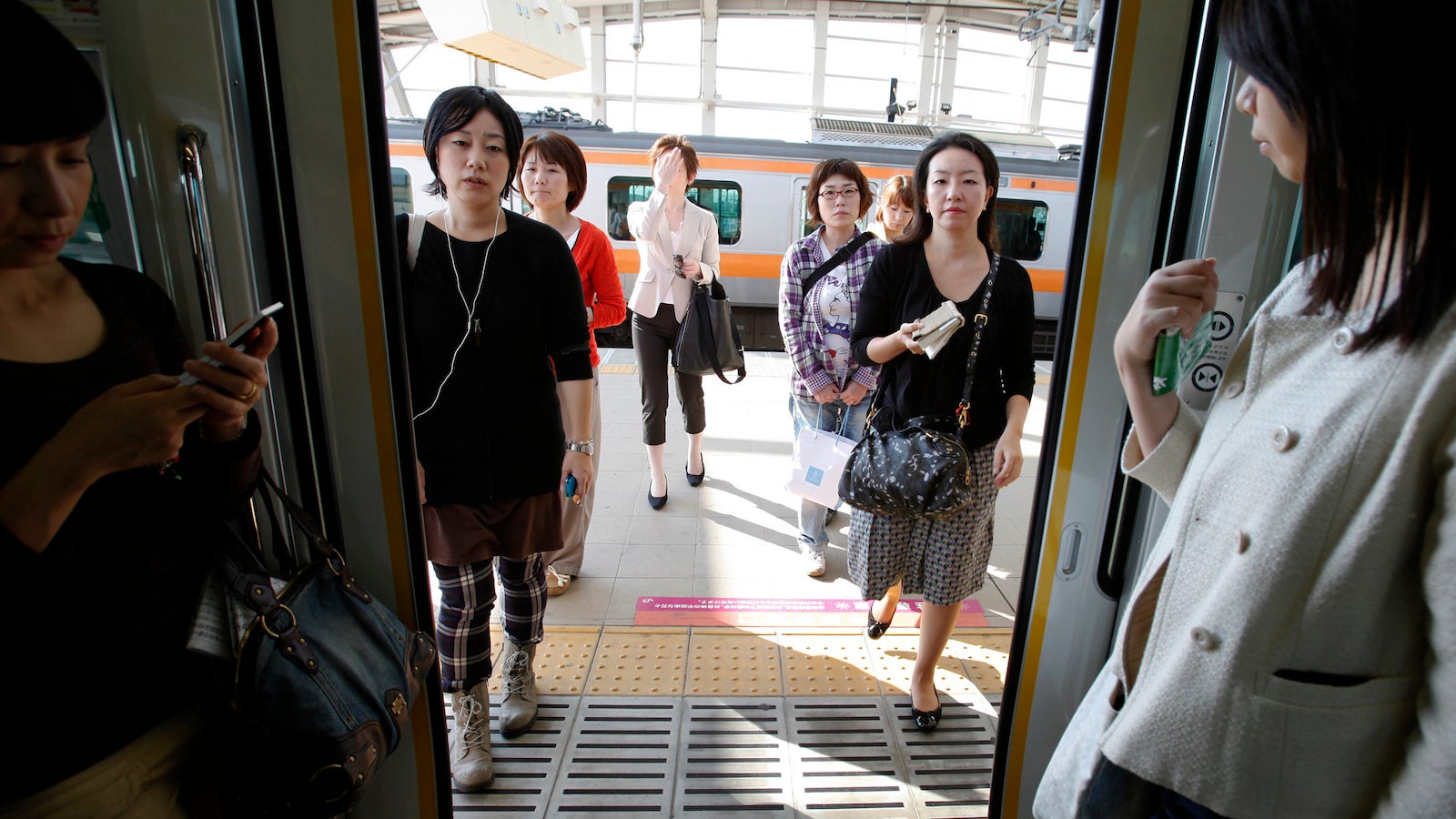Japan wants more women to work—but what do women get in return?
Japan faces a looming labor crisis—and it’s counting on women to save the day.


Japan faces a looming labor crisis—and it’s counting on women to save the day.
The country’s shrinking, rapidly aging population poses a major threat to the future of the Japanese economy. In order to avoid a potential meltdown, the government is attempting to encourage more women to join the workforce through its “Creating a Society in which All Women Shine” initiative, which is better known as Womenomics. But while the government says it wants to help women break the glass ceiling, its focus seems to be solely on what women can do for Japan—not what Japan can do for women.
The government’s solution to this problem is to get more women working. In 2014, Japan ranked 104 out of 142 countries in terms of gender equality, and just 63% of working-age Japanese women participated in the labor force, compared to an estimated 84% of men.
The potential payoff of lessening this chasm could be huge for Japan. According to Goldman Sachs, closing the gender employment gap could boost Japan’s GDP by nearly 13%. Fully closing the gender gap in Japan by 2025 would also increase its labor pool by more than 1.5 million workers.
But there’s a significant problem with Womenomics: There’s not much in it for women.
Japanese women are typically more highly educated than their male peers. But they generally leave the workforce and the career track after a few years to have a family. Japanese cultural values have a lot to do with women dropping out of the workforce in their twenties— mothering is considered an occupation in and of itself in Japan—but there are also practical reasons why women leave so early.
For one thing, women in Japan receive nearly 30% less pay than their male counterparts. As opposition party leader Renho noted in a recent Q&A session with the Foreign Correspondent’s Club of Japan (FCCJ), Japan’s income tax laws also often penalize dual-income households.
On top of economic disincentives, office culture in Japan is often incompatible with raising a family. Long hours and presenteeism are the best way to move up the corporate ladder, which leaves little time for the women who are expected to simultaneously manage caretaking responsibilities—especially as Japan struggles to deal with a serious shortage of daycare spaces. “Once I go return to work, if I don’t get a lot of help from my husband or the grandparents, working and raising kids becomes a burden that’s too much to bear,” says one blogger.
And pregnant female employees regularly experience a form of workplace bullying called “maternity harassment,” wherein women are often demoted or forced to quit soon after becoming pregnant. In 2014, the Supreme Court ruled that it was illegal to discriminate against pregnant women, but the practice still proliferates.
“This entire Womenomics movement may actually be a harbinger of karoshi (death by overwork) for the female half of the population,” says media personality Maiko Kissaka. Kissaka notes that Womenomics has nothing to do with promoting gender equality. “To be blunt, when the government says they want to ‘create a society in which all women shine’ what they’re really saying is ‘we need you to work more.'”
Although there has been much public discussion about increasing the number of female workers in Japan, politicians are mute on how to help equalize the balance of gender roles. A September 2015 speech by prime minister Shinzo Abe to the Global Leaders Meeting on Gender Equality and Women’s Empowerment makes passing reference to “creating a society where it is commonplace for both men and women to share responsibility for work, household chores, and child rearing.” But the focus of Abe’s short speech to the United Nations was on increasing workforce participation by women, not on how to provide support for the domestic changes this will cause in its wake.
As part of Womenomics, the Abe government aims to increase the number of female managers and board directors in an effort to catch up with Japan’s peers in the West, who typically enjoy more gender diversity in leadership positions. But instead of entering back into the workforce in high-power positions, women are returning to part-time, low-paying jobs in low-skill settings such as retail and in care homes, looking after the rapidly growing elderly population.
This work is often precarious—less than 65% of workers in Japan enjoy regular, full-time, salaried work. For mothers reentering the workforce, flexible work arrangements with short hours might actually make it easier to juggle work, childcare, and managing a household. But for younger women, erratic, work makes it difficult to save enough money to start a family. The nature of work in Japan means women are waiting longer and longer to have children. In the mid-1970s, women had children at an average age of 25—now they’re often waiting until after they turn 30.
Government policies are being rapidly developed to address these roadblocks. For example, Japan now offers 52 weeks of paid parental leave for both mothers and fathers. But there is another way the government can empower and promote women in the workforce, not just use them as labor: Authorities must work to truly change the culture of work itself in Japan by encouraging a better work-life balance—one that encourages men to step up, lean in, and help with raising children.